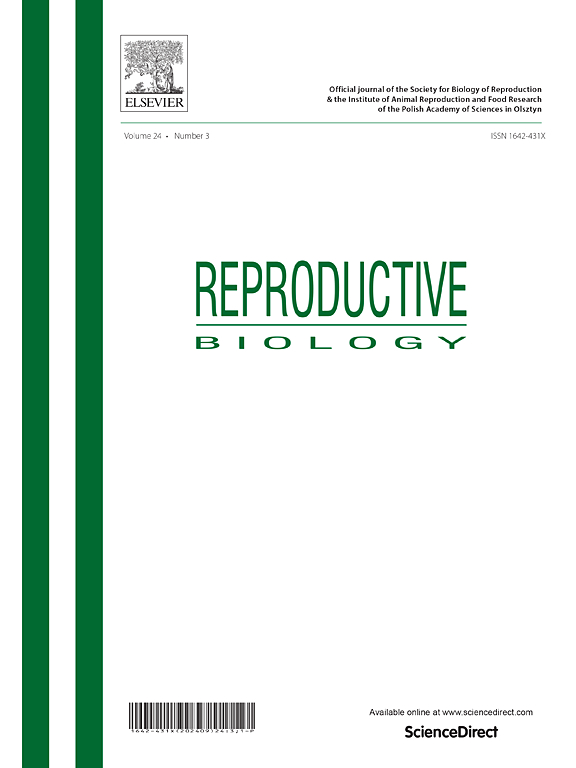Frequent use of methylphenidate causes reduction in sperm production and sperm quality in adult balb/c mice
IF 2.5
3区 生物学
Q3 REPRODUCTIVE BIOLOGY
引用次数: 0
Abstract
Methylphenidate is a psychostimulant used mainly in the treatment of attention deficit hyperactivity disorder (ADHD). The present study evaluated the effects of the drug on the testicles of adult mice, through morphological, histometric, hormonal, and sperm evaluations. Twenty-four Balb /c mice were randomly divided into three experimental groups (n = 8). Group 01: control (distilled water); Group 02: 20 mg/kg/day of methylphenidate; Group 03: 40 mg/kg/day of methylphenidate. The treatment caused a reduction in body weight that may indicate toxic effects caused by prolonged use of the drug. Regarding the percentage of tubular components, there was an increase in the percentage of tubule and epithelium, but the percentage of lumen and tunica propria decreased. The diameters of spermatogonia A and Sertoli cells decreased in stage 1 of the cycle. There were reductions in the percentage of lymphatic space, connective tissue, and macrophages, with a consequent reduction in the percentage of intertubules. Methylphenidate treatment during adulthood decreased plasma testosterone concentrations and compromised the spermatogenic process leading to a reduction in the number of spermatids and spermatozoa, sperm production, and sperm transit time in the epididymis. This allowed us to demonstrate that methylphenidate can impair male fertility.
频繁使用哌醋甲酯会导致成年balb/c小鼠精子产量和精子质量下降
哌醋甲酯是一种精神兴奋剂,主要用于治疗注意缺陷多动障碍(ADHD)。本研究通过形态学、组织计量学、激素和精子评估来评估药物对成年小鼠睾丸的影响。24只Balb /c小鼠随机分为3个实验组(n = 8)。01组:对照(蒸馏水);02组:20 mg/kg/天;03组:40 mg/kg/天。治疗导致体重减轻,这可能表明长期使用该药物引起的毒性作用。在小管成分的百分比上,小管和上皮的百分比增加,而管腔和固有膜的百分比下降。精原细胞A和支持细胞直径在周期的第1阶段减小。淋巴间隙、结缔组织和巨噬细胞的百分比减少,随之而来的是小管间的百分比减少。成年期的哌醋甲酯治疗降低了血浆睾酮浓度,损害了生精过程,导致精子数量和精子数量减少,精子产量减少,精子在附睾中的转运时间减少。这使我们能够证明哌甲酯会损害男性的生育能力。
本文章由计算机程序翻译,如有差异,请以英文原文为准。
求助全文
约1分钟内获得全文
求助全文
来源期刊

Reproductive biology
生物-生殖生物学
CiteScore
3.90
自引率
0.00%
发文量
95
审稿时长
29 days
期刊介绍:
An official journal of the Society for Biology of Reproduction and the Institute of Animal Reproduction and Food Research of Polish Academy of Sciences in Olsztyn, Poland.
Reproductive Biology is an international, peer-reviewed journal covering all aspects of reproduction in vertebrates. The journal invites original research papers, short communications, review articles and commentaries dealing with reproductive physiology, endocrinology, immunology, molecular and cellular biology, receptor studies, animal breeding as well as andrology, embryology, infertility, assisted reproduction and contraception. Papers from both basic and clinical research will be considered.
 求助内容:
求助内容: 应助结果提醒方式:
应助结果提醒方式:


